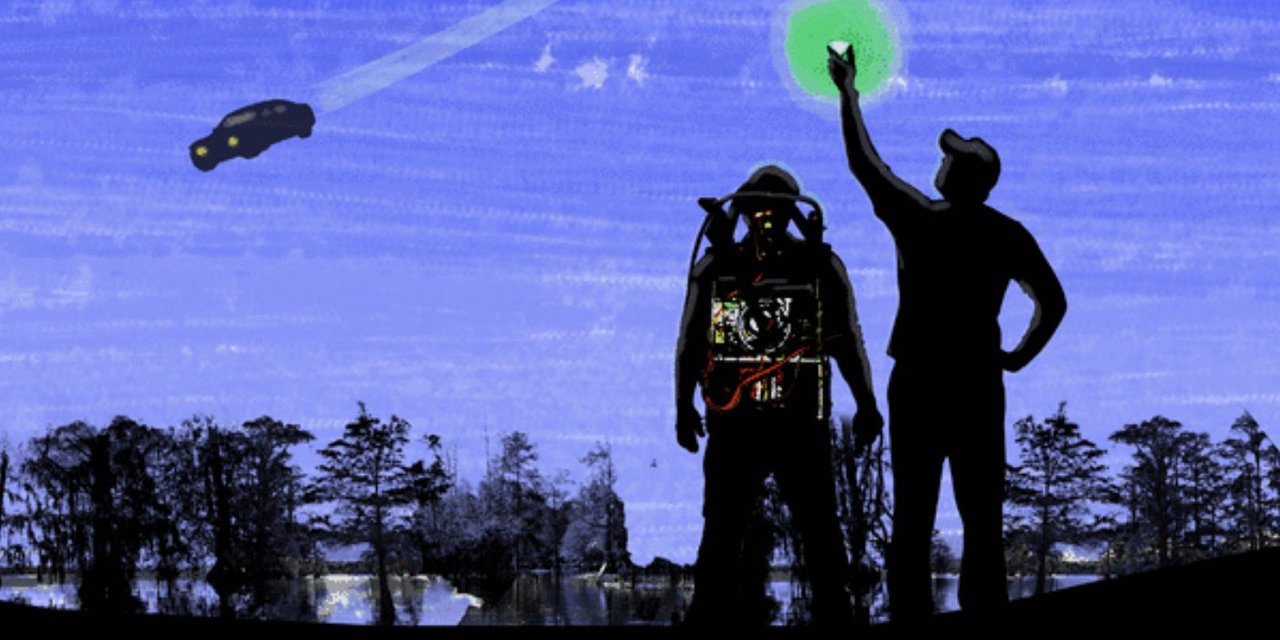
Does our universe overlap with other dimensions and timelines? Are there people out there who have experienced timeslips?
[feature pic from the film Lunopolis]
In the early 1990s, a well-traveled man arrived in Tokyo for a business trip. But he had a problem. Though fluent in several languages and in possession of a variety of international currencies, the man found himself marooned in the wrong country. Why? Because his passport and driver’s license tied him to a country called Taured, which doesn’t exist.
The man went back and forth with authorities for hours, utterly confused and initially convinced that he was the victim of an elaborate practical joke. The man claimed to work for an international conglomerate that frequently did business in Japan. Yet, the hotel he was supposed to be staying in didn’t have his registration. And his passport observed citizenship to the nation of Taured. Additionally, his checkbook contained checks linked to an account with a bank that doesn’t exist.
Local law enforcement, vexed and eventually frightened by the situation, put the man up in a hotel for the night until his identity could be ascertained. The next day he was gone without a trace. Even the documents of his that had been confiscated by police were missing.
In 1919, the image of Freddy Jackson, a naval air mechanic who died two days earlier from an accident with an airplane propeller, appears to be juxtaposed next to his friend in this squadron photo.
In 1901, two female academics, Charlotte Anne Moberly and Eleanor Jourdain, visited the Petit Trianon gardens at the Palace of Versailles. The women became lost and soon began to notice deserted farmhouses and cottages cloaked in dreariness. “Everything suddenly looked unnatural,” Moberly later wrote. “Even the trees seemed to become flat and lifeless, like wood worked in tapestry. There were no effects of light and shade, and no wind stirred the trees.”
The women were encountered by several figures, including possibly Marie Antoinette, who were dressed in 18th century garments. Later, after comparing notes and doing historical research about the Palace as well as consulting a map of the grounds, the women wrote a book about their adventure, convinced they had experienced something paranormal.
These stories–and the countless others out there–stand as possible examples of what paranormal researchers call a ‘timeslip’. Distinct from time travel, which, at least conceptually, requires some sort of device or mechanism, timeslips are events in which a person’s or persons’ cognitive interface shifts, melds or bleeds forward or backwards in time, or switches tracks into an alternate timeline or reality. People who report timeslips often describe them as eerily subtle. Sometimes they claim to have merely observed a singular event from another time. Other times, wives, husbands, and jobs are missing from reality, replaced overnight with a subtle replacement.
There are some who claim to have physical evidence of this incredible phenomenon.
At the age of 64, Harry Ross noticed something peculiar in a family photo. Taken outside Harry’s home in Rothesay, Bute, this photo shows him, his son Andrew, 26, and granddaughters Bonnie, five, and Leah, two. It also shows a mysterious face looking through the window that Harry and his family claim is Harry 42 years earlier on his wedding day.

Other reports involve sudden juxtapositions of historical objects and even sightings of pterodacytals.
Incredibly, there are scientists who claim the concept may actually have something to it. Except they don’t call it a timeslip; they call it a multiverse jump. The multiverse is a concept that is gaining traction among some prominent physicists, who believe our universe may be just one of a near infinite number of universes, universe bubbles, which are constantly bracketing and creating new timelines and realities. Our consciousness, which exerts some level of control at the quantum level, may become involved in a theoretical state called quantum entanglement, which can cross the time barrier and actually breach the space-time continuum.
Some people believe this creates a condition in which a near infinite number of parallel timelines and universes can essentially stack on top of one another, allowing certain people at certain moments to glimpse shifts in the timelines. This concept is brilliantly explored in the 2009 science fiction mockumentary Lunopolis (from which this post’s featured image was sourced), as well as Philip K. Dick’s Martian Timeslip, Stephen King’s The Langoliers, and Woody Allen’s Midnight in Paris.
Even if we were able to definitively say that some sort of metaphysical slip were occurring in these instances, the next question would be what kind of slip? Are these examples of traditionally categorized timeslips, in which individuals are gleaning bits and pieces from our past or future? Or, are these reports the result of multiverse jumps, by which unsuspecting people experience quantum entanglement and actually find themselves temporarily overlapped in a different universe altogether? A third alternative would be a dimensional shift, in which a reality reset in our universe creates a condition in which a person simultaneously experiences two different timelines: our original timeline and a fractured alternate timeline similar to the one in Back to the Future 2.
This alternative, known as a dimensional shift, is claimed by many to be the result of consciousness exerting a strange form of control over reality. Some people cite 9/11 as a reality reset. This event featured a massive paradigm overhaul for literally billions of minds. Some scientists, including the ones at the PEAR consciousness anomaly research institute, claim the role of consciousness in physical reality allows for small ordered breaches in what should be random information. When compounded a billion times over simultaneously–such as in powerful global events–some fringe thinkers think quantum entanglement creates a split, derailing our timeline into one or many others.
[This article of mine originally appeared on www.theghostdiaries.com]
